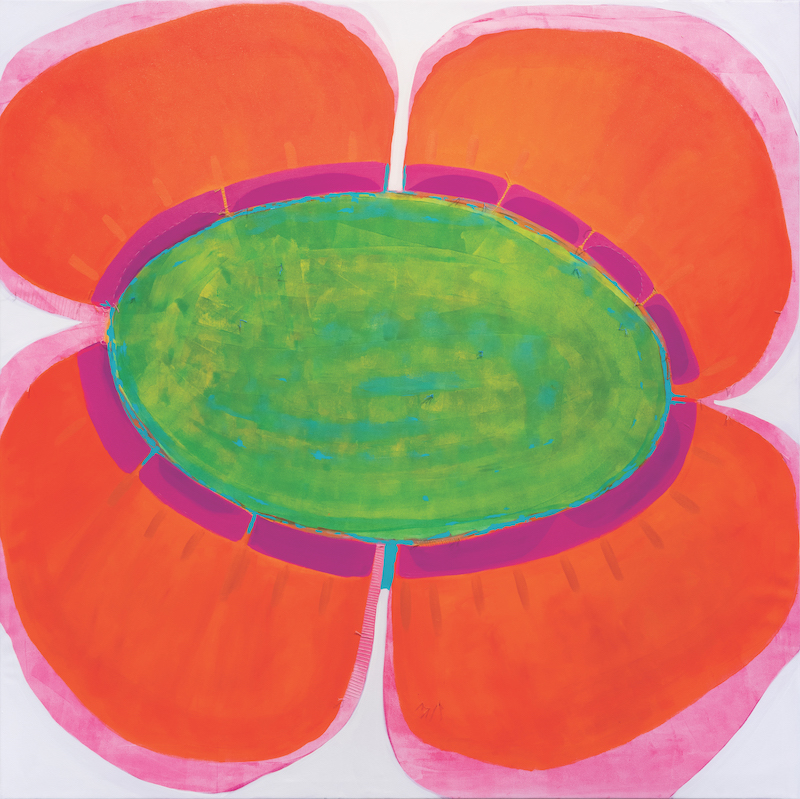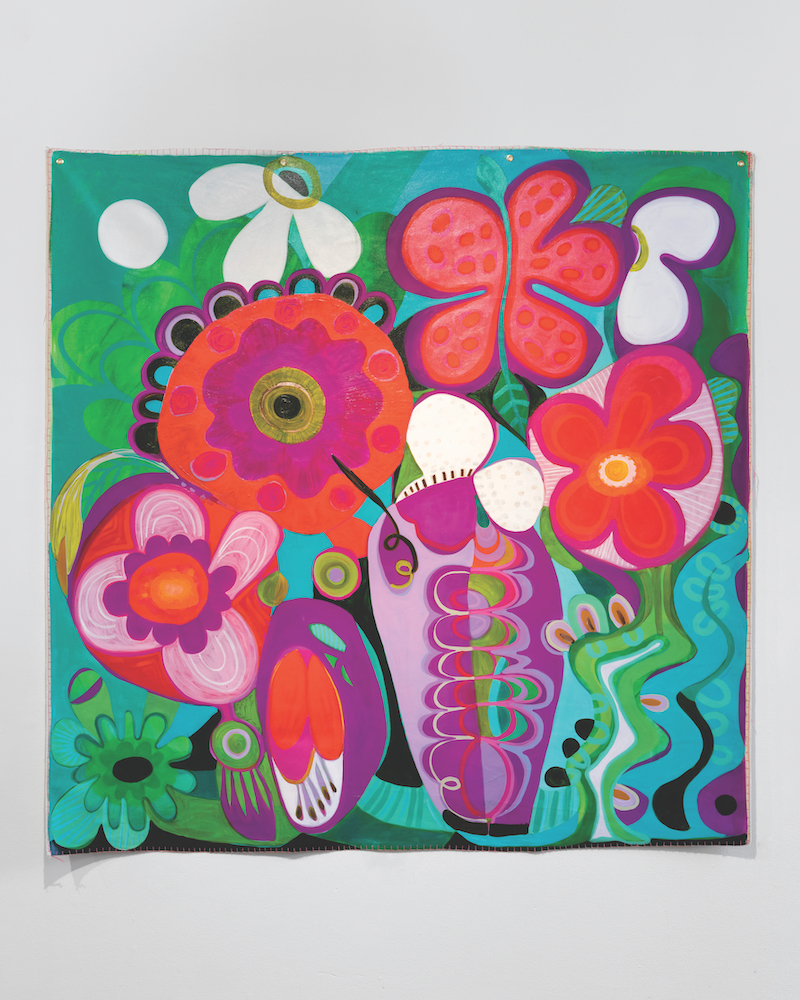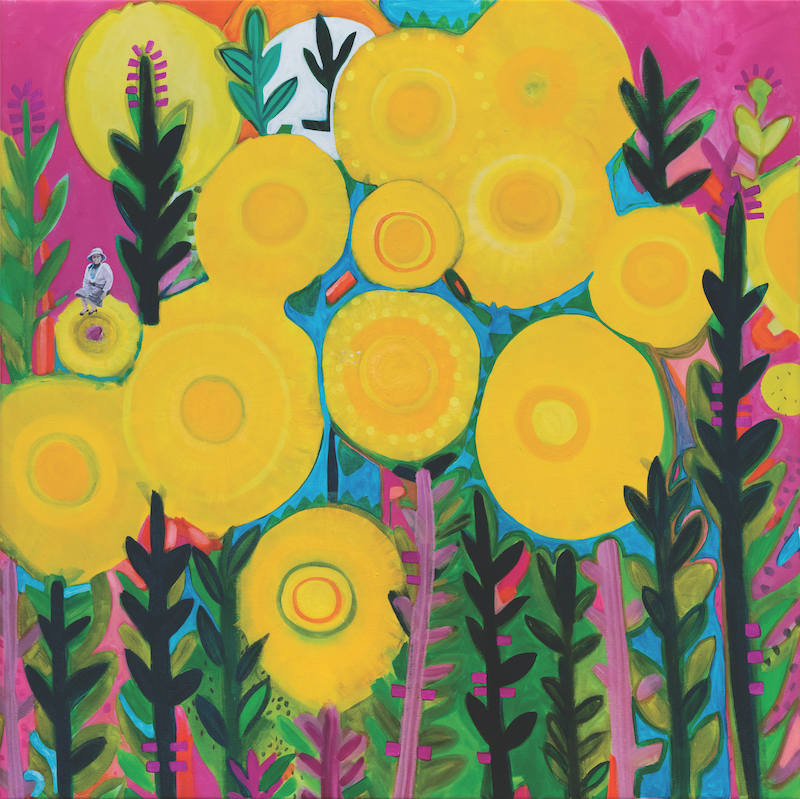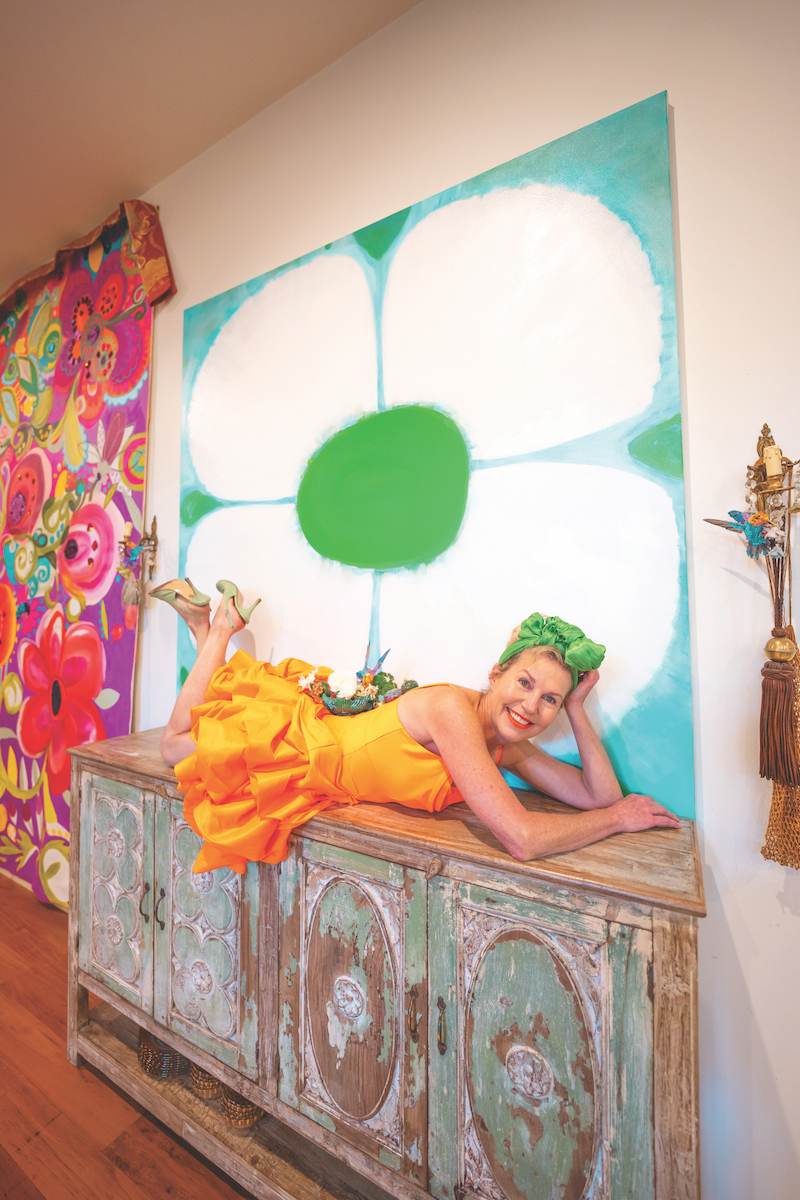Acutely aware of the uglier sides of humanity, Janno Mclaughlin has made it her mission to create uplifting works of art that emanate heart and beauty. In doing so, she reminds us all what is worth fighting for. Charlotte Middleton writes.
“My artwork is a defiant celebration,” says Janno Mclaughlin. Exuberant colour and bold gesture carry across her diverse practice, spanning large scale painting, soft fabric installations, mixed media works and more. Her approach may at first glance seem playful, but this belies the artist’s deep concern with the state of the world and steadfast vision for an alternative where compassion and community prevail. In the meantime, her work offers a kind of manifesto for joy, despite it all.
Beginning her career as a nurse (and outdoor adventurer), Mclaughlin’s healing hands instead found their way towards paint. She eventually completed a Bachelor of Fine Art at RMIT in 1994, and a Masters of
Contemporary Art at the Victorian College of the Arts in 2018. Now based in rural Australia, she has spent many of her artist years living between New York and Buenos Aires, juggling multiple social and private art projects.
The passion project that has consumed Mclaughlin for the past two-and-a-half years is her mammoth –
and ongoing – #sunflowerquiltforukraine. Collecting patches from all over the world to stitch together,
the purpose of the giant installation work is to, “give a metaphoric hug to all of the children and innocent people in Ukraine and show them that they are not abandoned or forgotten.”
Inspired by Christo and Jeanne-Claude’s famous public art interventions, Mclaughlin’s ambitious goal is to create a 1km-long quilt with which to envelop Ukrainian buildings, parks, streets, bombsites, and other sites of atrocity. Doubling as a powerful community peace protest, the work has already garnered significant international attention.
As her own rich tapestry of life experiences continues to inform Mclaughlin’s artmaking, painting in Argentinian slums as part of an environmental initiative and becoming mother to a child with a disability have left indelible marks.
“My work always concerns the seeking and creation of safe spaces, and is motivated by pleas to look after each other and to protect nature,” reads the accompanying statement for her most recent exhibition, Unsprung, at Melbourne’s Fortyfivedownstairs Gallery in 2023.
With an abundance of floral motifs and vibrant depictions of nature, the series offered an escape from the psychological heaviness of Mclaughlin’s quilt project. A contemporary take on the flower power movement, Unsprung is broadly a counterresponse to what the artist deems, “the great unravelling that seems to be the current state of the world.”
This July she took a continuation of the exhibition to show in New York.
For the busy artist, each day begins with a coffee and a long run to clear her head, before knuckling down in her studio. With a penchant for “explosive colour”, Mclaughlin gravitates toward painting, mixed media and hand-stitching, favouring high-quality pure pigment paints and archival canvas. Repurposed vintage fabrics sometimes make their way in too. “I want my work to outlast me and mean something in the storyline of art beyond the obvious, beyond today,” she says.
The final element? Dancing. Visit the page on Mclaughlin’s website for Unsprung and you’ll be greeted by a video of the artist from behind, wielding a paintbrush in one hand as she bops and jives in front of a sprawling canvas.
Mclaughlin’s practice is ultimately a blueprint for finding the good and the beautiful in unsettling times. Like an outstretched arm, her artworks beckon us all to join in her dance – for love, inclusion, nature, optimism, and peace. For hope, and for humanity.
Above: Artist Janno Mclaughlin. PHOTO: @NESSSTUDIOS888
Courtesy: the artist.





